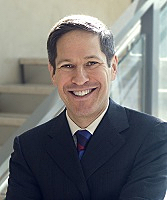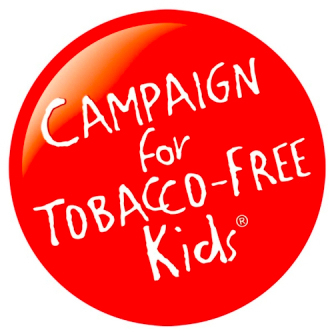The Centers for Disease Control and Prevention (CDC) has launched a new series of emotionally powerful ads to kick off the fifth consecutive year of its successful Tips From Former Smokers campaign. These hard-hitting ads tell the moving, personal stories of several of the many Americans suffering from smoking-related illnesses, which include heart disease, depression, tooth loss, and chronic obstructive pulmonary disease (COPD).
Affecting an estimated 24 million Americans, COPD ranks as the third leading cause of death (138,080) after heart disease (597,689) and cancers (574,743), according to the CDC. The American Lung Association notes that COPD is also a major cause of disability, and while some 12 million Americans have a formal COPD diagnosis, an estimated 12 million more people may have the disease and go undiagnosed.
The leading cause of COPD is cigarette smoking. According to the National Institutes of Health, 42 percent of COPD sufferers are former smokers and 34 percent are current smokers. The CDC observes that cigarette smoking remains the single largest cause of preventable disease and death in the United States, estimated to kill more than 480,000 Americans each year. For every American who dies from a smoking-related disease, the agency says about 30 more suffer at least one serious illness related to smoking.
The novel CDC ads, which started this week, will be presented for 20 consecutive weeks on radio, television, online, billboards, and in newspapers and magazines.
The CDC notes that its 2015 “Tips” ads had immediate and strong impact, continuing the campaign’s sustained success since its initial 2012 launch. It reported that during the time the 2015 ads were on the air, about 62 percent more people called the national quitline, 1-800-QUIT-NOW, for free help and that since 2012, the Tips ads have generated more than 600,000 additional calls to the toll-free quitline number.
 “More than 30 courageous people have shared their stories through the Tips campaign since 2012,” said CDC Director Tom Frieden, M.D., MPH, in a press release. “These real-life stories show, in a way that statistics can’t, the suffering and disability smoking causes. Most Americans who have ever smoked have already quit, and most people who still smoke want to quit. This campaign will help them try and help them succeed.”
“More than 30 courageous people have shared their stories through the Tips campaign since 2012,” said CDC Director Tom Frieden, M.D., MPH, in a press release. “These real-life stories show, in a way that statistics can’t, the suffering and disability smoking causes. Most Americans who have ever smoked have already quit, and most people who still smoke want to quit. This campaign will help them try and help them succeed.”
One of this year’s new ad participants is Becky, 54, an attorney from Ohio, who started smoking at 16. At 45, Becky, a mother of two, working at her dream job as a child-advocate attorney, was diagnosed with COPD. She had to quit her job, suffered a collapsed lung, and while she finally managed to quit smoking at age 52, she now has end-stage COPD and has to live tethered to an oxygen tank 24/7.
According to the press release, the new ads tell the stories of:
• Brian, 60, a military veteran from Texas, who started smoking at age 8 and had his first heart attack at 35.
• Rebecca, 57, a Florida grandmother of three who began smoking at 16. She suffered tooth loss and depression. She finally quit at 53. Six months later, she ran a 5K race to celebrate.
• Rico, 48, a businessman from California, who started smoking at 14 and was diagnosed with cancer at 44. He quit, increasing his chances of survival, and was able to see his daughter graduate high school.
• Kristy, 36, from Tennessee, started smoking cigarettes at 13, and tried to quit by using e-cigarettes and cutting back on the number of cigarettes she smoked. Kristy kept smoking traditional cigarettes but eventually stopped using e-cigarettes. She finally quit smoking for good at age 33 after suffering a collapsed lung. Kristy was also featured in the 2015 campaign.
The CDC notes that smokers who cut down on the number of cigarettes smoked by adding another tobacco product, like e-cigarettes, still face serious health risks, emphasizing that smokers must quit smoking completely in order to fully protect their health, and that smoking even a few cigarettes a day is dangerous.
Not only causing serious harm to millions of people’s lives, the CDC points out that cigarette smoking also has a negative impact on the U.S. economy, costing more than $300 billion a year — nearly $170 billion in direct medical care for adults and more than $156 billion in lost productivity.
 “There is a clear need to continue and even expand mass media campaigns like Tips,” said Matthew L. Myers, president of the Campaign for Tobacco-Free Kids. “First, these campaigns are needed to counter the $9.6 billion a year — more than $1 million every hour — the tobacco industry spends to market its deadly and addictive products. Tobacco companies never let up in trying to entice kids and keep their customers addicted. Efforts to prevent kids from smoking and help smokers quit must be equally sustained and aggressive.”
“There is a clear need to continue and even expand mass media campaigns like Tips,” said Matthew L. Myers, president of the Campaign for Tobacco-Free Kids. “First, these campaigns are needed to counter the $9.6 billion a year — more than $1 million every hour — the tobacco industry spends to market its deadly and addictive products. Tobacco companies never let up in trying to entice kids and keep their customers addicted. Efforts to prevent kids from smoking and help smokers quit must be equally sustained and aggressive.”
“Second, despite our nation’s enormous progress in reducing smoking, tobacco use still kills more than 480,000 Americans and costs us about $170 billion in healthcare bills each year,” Myers said. “More than 60 percent of these costs are paid by taxpayers through government programs such as Medicare and Medicaid.”
The Tips ads encourage smokers to call 1-800-QUIT-NOW or to visit http://www.cdc.gov/tips to view the personal stories from the campaign. The Tips website includes detailed assistance developed by the National Cancer Institute to support smokers trying to quit.
Myers observed that mass media campaigns have been proved effective at reducing tobacco use and its toll in health, lives, and healthcare dollars, noting that in both youth and adults, smoking rates have fallen faster and to record lows in recent years at the same time the U.S. has seen unprecedented anti-smoking media campaigns, including not only the CDC’s Tips campaign, but also the FDA’s youth-oriented campaigns and Truth Initiative’s reinvigorated truth campaign.
He cites recommendations in the most recent surgeon general’s report on tobacco for ending the tobacco epidemic that call for “counteracting industry marketing by sustaining high-impact national media campaigns at a high-frequency level and exposure for 12 months a year for a decade or more.”
Notwithstanding that the Tips campaign has only been on the air for part of each year and spends just a fraction of the tobacco industry’s marketing budget, Myers emphasized that it has been very effective — in its first year helping some 100,000 smokers to quit and preventing at least 17,000 premature deaths, according to a December 2014 study published in the American Journal of Preventive Medicine. He says the campaign is considered a public health “best buy” because it spent only $393 per year of life saved, a figure well below the accepted benchmark for cost-effective public health programs of $50,000.
“The CDC’s ads tell the harsh truth about how devastating and unglamorous smoking truly is,” said Mr. Myers. “These ads remind viewers that smoking causes not only well-known conditions such as lung cancer and heart disease, but in fact damages nearly every organ in the human body. Importantly, the new ads feature populations with high rates of smoking, including military members and veterans and people with mental illness.”
The Campaign for Tobacco-Free Kids is urging Congress to ensure that campaigns like Tips from Former Smokers are continued and expanded because they save lives and money, and advocate that the states also do their part by increasing funding for tobacco prevention and cessation. It notes that media campaigns citing substantial scientific evidence from health authorities, including the Surgeon General, the National Cancer Institute, the Institute of Medicine, and the CDC, reduce the number of children who start smoking and increase the number of smokers who quit, saving lives and healthcare costs.
For more information, see the Campaign for Tobacco-Free Kids fact sheet: Public Education Campaigns Reduce Tobacco Use, http://www.tobaccofreekids.org/research/factsheets/pdf/0051.pdf.

